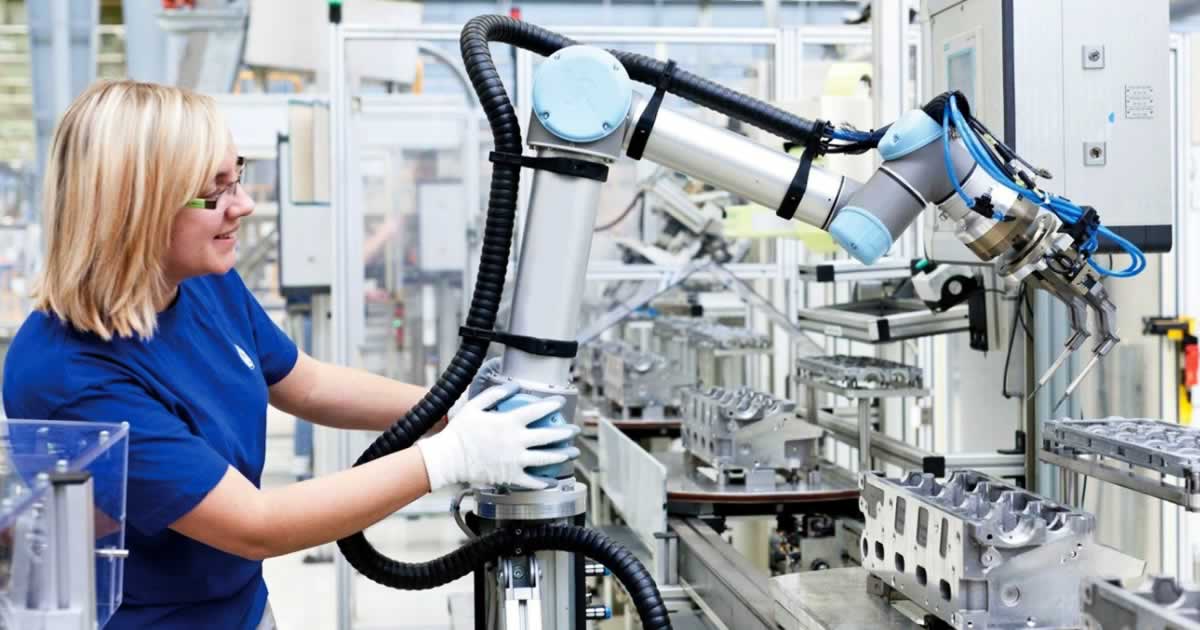Ads
In an increasingly globalized and digital world, technological evolution is advancing by leaps and bounds, transforming all sectors of society. One of the most impacted areas is, without a doubt, industry. This is how the unstoppable phenomenon of industrial automation is emerging. But what exactly is it, and how is it revolutionizing the world of production and manufacturing?
The answers to these and other questions will be addressed in this post, where we'll delve into how robots are radically changing industry. From process optimization to improving efficiency and productivity, industrial automation promises to be the key to the future of industry.
Ads
Finally, we'll discuss not only the benefits of industrial automation but also the challenges it poses. How are companies adapting to this change? How is the workforce preparing for this new reality? Content packed with innovation, evolution, and the industrial revolution awaits. Go ahead, dive into the fascinating world of robots and industrial automation!
The robotics revolution in industry
The industrial robotics revolution is unstoppable and is drastically changing the way businesses operate around the world. The robots They are capable of efficiently performing complex and repetitive tasks, allowing companies to improve their productivity and efficiency. But how is this transformation happening, and what does it mean for the future of the industry?
Ads

Adoption of industrial robots
The adoption of robots in industry has increased significantly in recent years. According to the International Federation of Robotics, there were approximately 2.7 million industrial robots in operation worldwide in 2020, an increase of 121% compared to the previous year.
This massive adoption of robotics is due to several factors. First, technological advances have made robots more affordable and accessible to businesses of all sizes. Furthermore, robots can work 24/7 without breaks, and can perform tasks with precision and speed that humans cannot match.
Industrial robot applications
Industrial robots are used in a wide range of applications. Some of the most common uses include:
- Assembly: Robots can perform assembly tasks quickly and with high precision, making them ideal for mass production.
- Quality Inspection: Robots can inspect products with greater accuracy and consistency than humans, helping to ensure product quality.
- Painting and Coating: Robots can apply paint and other coatings evenly and accurately, improving quality and reducing waste.
- Loading and unloading: Robots can move heavy materials easily and safely, improving efficiency and reducing the risk of injury.
The future of industrial automation
Technological advancements are transforming industrial automation, driving efficiency and innovation. Robots no longer simply perform repetitive tasks; they can now adapt to changing environments and make real-time decisions thanks to artificial intelligence and machine learning.
The integration of the Internet of Things (IoT) and cloud computing allows for process optimization through real-time data analysis, reducing costs and errors. Smart factories, part of Industry 4.0, offer greater flexibility and more efficient production.
Furthermore, collaborative robotics is gaining prominence, with machines designed to work safely alongside humans. As these innovations evolve, the industrial sector will require new skills, redefining the role of workers and paving the way for a more automated and interconnected future.
Collaborative robots
One of the most exciting developments in industrial robotics is the emergence of collaborative robots, also known as cobots. These robots are designed to work alongside humans, rather than replacing them. Cobots are more flexible and safer than traditional industrial robots, making them ideal for tasks that require close interaction with humans.
Cobots stand out for their adaptability, safety, and ease of programming. They are ideal for environments where human-machine collaboration optimizes efficiency, improving precision, and reducing risks in repetitive or assembly tasks.

Artificial Intelligence and Machine Learning
Artificial Intelligence (AI) and Machine Learning (ML) are also playing an increasingly important role in industrial robotics. Robots equipped with AI and ML can learn to perform new tasks and adapt to changes in their environment, making them more versatile and efficient.
Autonomous robots
Autonomous robots are another growing area in industrial robotics. These robots can navigate independently and perform tasks without human supervision. This makes them ideal for tasks in hazardous or hard-to-reach environments.
Conclusion
In conclusion, the industrial robotics revolution is an unstoppable reality. Advances in technology are making robots more accessible and efficient, allowing companies of all sizes to adopt this innovation and improve their productivity. Robots are proving to be essential in a variety of applications, from assembly and quality control to painting and heavy material handling.
The future of industrial automation is even more exciting, with the emergence of collaborative robots, or "cobots," designed to work alongside humans. Likewise, Artificial Intelligence and Machine Learning are playing an increasingly crucial role, allowing robots to learn new tasks and adapt to changes in their environment. Furthermore, autonomous robots, capable of navigating and working independently, are opening up new possibilities in difficult or dangerous environments.
Without a doubt, industrial robotics is transforming the way businesses operate, and as technology continues to advance, we're likely to see even more innovation and change in the future. The industrial robotics revolution is not only unstoppable, but it's just beginning.



